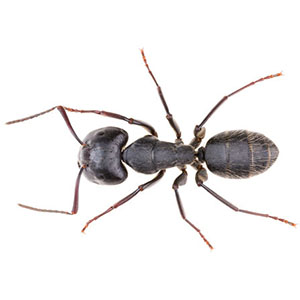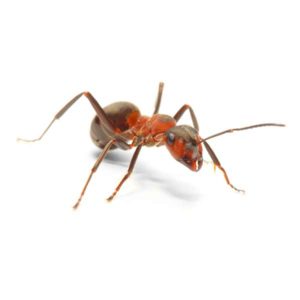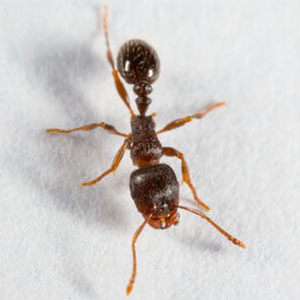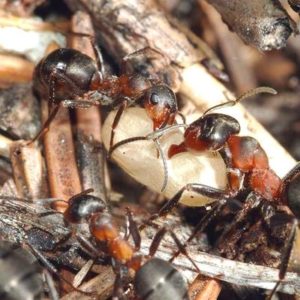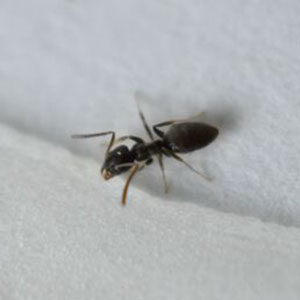Carpenter Ants
The Northwest’s largest ants are known as carpenter ants because they nest in wood. Nests consist of numerous tunnels chewed in logs, stumps, tree trunks, firewood, decks and porches, window and door frames, wall voids and foam insulation. The ants expel piles of sawdust, dead ants and parts of dead insects from the nest and these can help inspectors determine the nest’s location. Indoor nests are usually “satellite” nests connected to the colony’s main nest outdoors. Satellite nests are often established in wood where moisture problems exist (e.g., around leaking pipes, inadequately sealed window frames and roof leaks).
One of the largest ant species in the United States, these critters can reach up to 13 mm in length. Winged, dark in color, and residing in moist, damaged woods, it’s common that homeowners mistake carpenter ant swarms for termite colonies. Though they aren’t likely to cause much damage to the exterior of your home, they are a major nuisance once they get indoors. Feeding on sweets and meats, they are likely to contaminate your food supply. To find out how to deal with carpenter ants, learn more about our pest control services.
